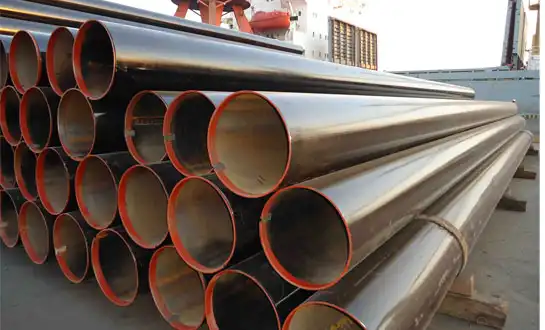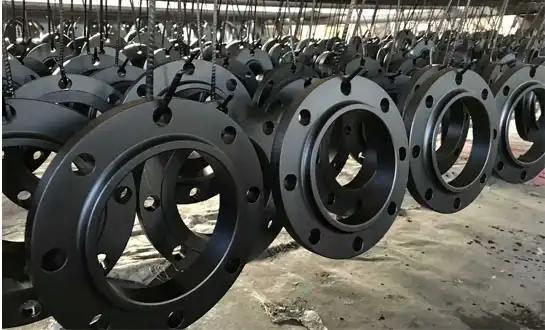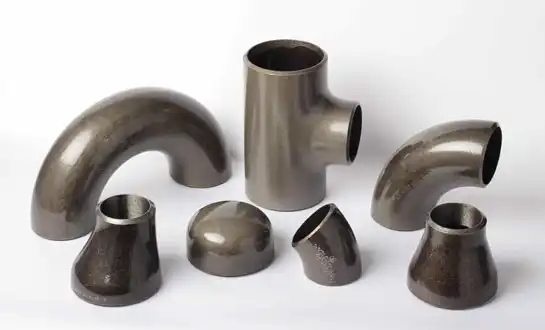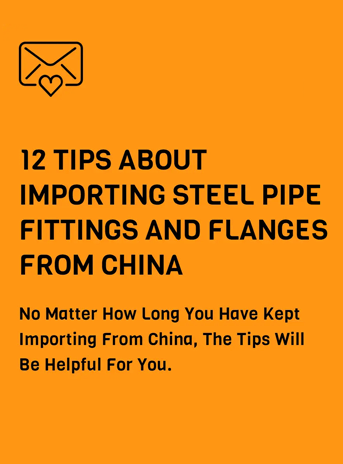Why Hot Bending Matters in High-Pressure Butt Weld Fittings?
The performance and dependability of butt weld fittings in high-pressure applications are greatly improved by hot bending, a crucial production procedure. This process is very specialized and requires heating steel to precise temperatures before shaping it into the desired forms. This guarantees the best grain structure and mechanical qualities. To keep structural integrity and stress concentrations to a minimum, hot bending is required for butt weld fittings in high-pressure systems that are subjected to significant operating demands. Industrial processing systems, power generating facilities, petrochemical plants, and other harsh environments can be reliably connected using this method. When choosing butt weld fittings for important applications, engineers and procurement professionals might benefit from a better understanding of hot bending.
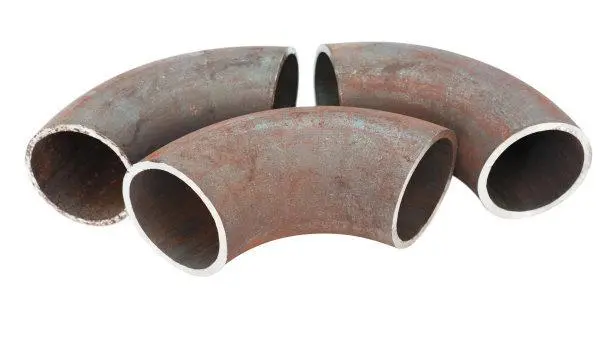
The Science Behind Hot Bending in High-Pressure Applications
Material Microstructure Enhancement Through Controlled Heating
The microstructure of the steel used in butt weld fittings is fundamentally altered by hot bending, which results in enhanced mechanical qualities necessary for high-pressure applications. Steel undergoes a natural relaxation of internal tensions and reorganization of grain boundaries when heated to temperatures ranging from 900 to 1200 degrees Celsius. By subjecting butt weld fittings to a regulated heat treatment, we can make sure that their strength is consistent throughout its geometry and that there are no pressure-related weak spots. Improved tensile strength and impact resistance are additional benefits of this procedure, which also encourages uniform carbide dispersion inside the steel matrix. The material is able to flow naturally into its final shape while keeping excellent metallurgical characteristics while hot bending, in contrast to cold bending procedures, which can add residual stresses and work hardening effects. To ensure that each batch of butt weld fittings made using hot bending techniques is consistently of high quality, producers use precise cooling rates and temperature control.
Stress Distribution and Pressure Resistance Optimization
For butt weld fittings to resist high-pressure working conditions, the hot bending method produces ideal stress distribution patterns inside of them. A steel's performance is not jeopardized when it is heated to the right temperatures since the molecular structures within rearrange to fit the new shape. Because of the even distribution of stresses, butt weld fittings are resilient enough to withstand the pressure surges and cyclic loading scenarios typical in industrial settings. When material deformation happens without sufficient molecular rearrangement, as is common with cold forming processes, the approach gets rid of the severe stress gradients. The greater fatigue resistance of hot-bent fittings allows them to retain their structural integrity even after thousands of pressure cycles. According to advanced finite element analysis, hot-bent butt weld fittings have better stress patterns than cold-formed ones. This is especially true in high-pressure situations when safety margins are important. In harsh operating conditions, the increased pressure resistance immediately correlates to less maintenance needs and longer service life.
Temperature Control and Metallurgical Precision
Butt weld fittings obtain the best metallurgical qualities for high-pressure applications thanks to precise temperature control during hot bending. To avoid material property degradation due to localized overheating or inadequate heating, the process necessitates high-tech heating systems that can distribute heat evenly throughout the workpiece. Calibrated pyrometers and thermal imaging systems are part of the quality control procedures that constantly monitor temperatures to ensure correct heating patterns. Equally important is the cooling phase, which must be done at regulated rates to avoid the development of brittle microstructures that might compromise the butt weld fittings' dependability. Achieving the appropriate mechanical qualities requires meticulous matching of heat treatment settings to specific steel grades and wall thicknesses. If residual stresses are to be relieved and the final microstructure is to be optimized, post-bending heat treatment can be required. Batches of butt weld fittings intended for high-pressure duty may be reliably traced and manufactured to uniform quality standards when all thermal processes are documented.
Manufacturing Excellence and Quality Assurance
Advanced Hot Bending Equipment and Technology
In order to manufacture butt weld fittings of the highest quality, modern factories use elaborate hot bending machinery. Accurate temperature control and energy efficiency are made possible with induction heating systems, which deliver precise, targeted heating. Bend radii and dimensions are consistently accurate throughout production cycles thanks to computer-controlled bending equipment. Modern mandrel systems keep butt weld fittings' internal surfaces supported when bending, which stops the wall from thinning and keeps the internal flow characteristics smooth. Through it all, real-time monitoring systems keep tabs on crucial metrics like temperature, bending force, and dimensional data. Modern, high-tech machinery with built-in feedback control systems allows for continuous optimization of process parameters with the use of little human intervention. In key production processes, robotics integration improves repeatability and decreases human error. Every batch of butt weld fittings is guaranteed to exceed the strict quality requirements needed for high-pressure applications thanks to the combination of sophisticated technology and expert workers.
Quality Control Protocols and Testing Standards
In order to guarantee that hot-bent butt weld fittings can withstand the rigorous conditions of high-pressure uses, stringent quality control procedures are implemented. Coordinate measuring equipment provide dimensional examination that all geometric parameters are within tolerances. Confirming that hot bending has produced the appropriate mechanical properties requires testing of material properties, such as tensile strength, impact resistance, and hardness. If there are any surface or interior flaws that might affect performance, non-destructive testing techniques like magnetic particle testing and ultrasonic inspection can find them. The structural integrity of finished butt weld fittings is validated using hydrostatic pressure testing, which simulates working circumstances. Throughout the hot bending operation, the chemical analysis proves that the material composition stays within the prescribed limits. Key quality measures may be tracked and patterns that may suggest process changes can be identified using statistical process control approaches. Customer quality requirements for butt weld fittings in critical applications are supported by documentation systems that preserve complete traceability from raw material receipt to final inspection. This ensures responsibility and provides the necessary support.
Certification and Industry Standards Compliance
Hot-bent butt weld fittings must comply with numerous industry standards and certification requirements to ensure suitability for high-pressure applications. International standards such as ASME B16.9, ASTM A234, and ISO 3183 define specific requirements for materials, dimensions, and testing protocols. Manufacturers must maintain quality management systems certified to ISO 9001:2015 standards, demonstrating systematic approaches to quality control and continuous improvement. Third-party inspection agencies often provide independent verification of manufacturing processes and final product quality. Material test certificates document chemical composition, mechanical properties, and compliance with applicable specifications for each batch of butt weld fittings. Welding procedure qualifications ensure that joining processes meet code requirements for high-pressure service. Regular audits by certification bodies verify ongoing compliance with established quality systems. Pressure vessel codes such as ASME Section VIII provide additional guidance for butt weld fittings used in pressure vessel applications, requiring enhanced documentation and testing protocols.
Performance Benefits in Critical Applications
Enhanced Reliability in Extreme Operating Conditions
Hot-bent butt weld fittings demonstrate superior reliability when subjected to extreme operating conditions commonly encountered in high-pressure systems. The uniform microstructure achieved through controlled heating provides consistent mechanical properties that resist crack initiation and propagation under stress. Temperature cycling, which can cause fatigue in inferior fittings, has minimal impact on properly hot-bent components due to their stress-relieved condition. Chemical processing environments with corrosive media benefit from the enhanced surface integrity that hot bending provides, reducing susceptibility to stress corrosion cracking. High-temperature applications rely on the thermal stability of hot-bent butt weld fittings, which maintain their mechanical properties at elevated temperatures better than cold-formed alternatives. Vibration resistance is improved due to the uniform stress distribution, preventing premature failure in applications with mechanical excitation. The combination of these performance advantages results in extended service life and reduced maintenance costs, making hot-bent butt weld fittings the preferred choice for critical applications where reliability cannot be compromised.
Cost-Effectiveness Through Extended Service Life
Due to its prolonged service life and decreased maintenance needs, hot-bent butt weld fittings offer substantial long-term cost savings, justifying the original investment. Fewer replacement cycles equal lower material costs and less system downtime due to superior wear resistance. System efficiency is maximized because to the improved pressure capability, which enables operating closer to design limits while yet preserving sufficient safety margins. The expenses of emergency maintenance and the production losses caused by unscheduled shutdowns can be mitigated by reducing the failure rates. Over the course of their useful life, quality hot-bent fittings save money on maintenance costs due to the reduced frequency of inspections and monitoring. Premature replacement may not be necessary due to localized wear patterns prevented by the consistent load distribution. Facilities that use high-quality components may see a decrease in their insurance premiums since insurers value properly-manufactured butt weld fittings more highly. Compared to alternatives made using less advanced processes, hot-bent butt weld fittings usually offer better value when lifespan costs are taken into account, which include installation, maintenance, and replacement charges.
Safety and Risk Mitigation Advantages
The chance of catastrophic failure is greatly decreased by hot bending, which improves the safety profile of butt weld fittings used in high-pressure applications. The residual stresses that may cause a sudden failure under pressure are eliminated in the stress-relieved condition that is attained by correct hot bending. A decrease in the likelihood of fracture formation and propagation—which may cause harmful pressure releases—is achieved through enhanced fatigue resistance. Because their mechanical characteristics are consistent throughout, engineers can anticipate how hot-bent fittings would behave under stress and incorporate sufficient safety margins into their designs. Prior to installation, every fitting must pass rigorous safety standards, which are ensured by quality control measures linked to hot bending operations. Improved dependability safeguards communities and employees by lowering the possibility of chemical processing applications releasing harmful substances into the environment. Due to their constant behavior patterns, hot-bent butt weld fittings may be more accurately predicted to have a residual service life when inspected regularly. According to risk assessment studies, hot-bent fittings that are made correctly have a lower failure probability than other manufacturing processes.
Conclusion
Butt weld fittings must undergo hot bending as part of the production process to fulfill the rigorous standards of high-pressure applications. Improved safety features, longer service life, and higher reliability components are the result of this method's use of exact temperature control and metallurgical optimization. HEBEI RAYOUNG PIPELINE TECHNOLOGY CO., LTD, a butt weld fittings manufacturer, uses cutting-edge hot bending technology to make butt weld fittings of the highest quality. These fittings are certified and continuously function exceptionally in a wide range of industrial applications.
FAQ
1. What temperature ranges are used in hot bending butt weld fittings?
Depending on the steel quality and the required wall thickness, hot bending usually takes place between 900°C and 1200°C. Optimal rearrangement of the grain structure while material integrity is maintained is achieved within this temperature range. Consistent mechanical qualities throughout the final butt weld fittings are ensured by precise temperature control, which is crucial for the dependability of high-pressure service.
2. How does hot bending improve pressure resistance compared to cold forming?
Pressure resistance is much improved by hot bending because it removes residual strains and develops patterns of homogeneous stress distribution. This method avoids failure-inducing stress concentrations by facilitating molecular realignment throughout the formation process. The fatigue resistance and pressure ratings of hot-bent butt weld fittings are higher than those of cold-formed ones.
3. What quality control measures ensure hot-bent fitting reliability?
The hot-bent fitting's quality is confirmed by a comprehensive battery of tests, which includes non-destructive testing, dimensional inspection, and material property verification. Hydrostatic pressure testing, which is designed to simulate actual operating conditions, is used to check the structural integrity. Total traceability is ensured using documentation techniques that guarantee every batch of butt weld fittings will meet the specified standards for high-pressure applications.
4. Are hot-bent butt weld fittings suitable for all high-pressure applications?
In most high-pressure situations, hot-bent butt weld fittings really shine when fatigue resistance and reliability are of the utmost importance. Think about the specific requirements of the application in terms of pressure, temperature, and chemical compatibility for optimal outcomes. Consulting with knowledgeable experts is frequently necessary to find the correct solution for each given application.
HEBEI RAYOUNG PIPELINE: Leading Hot-Bent Butt Weld Fittings Manufacturers
At HEBEI RAYOUNG PIPELINE TECHNOLOGY CO., LTD., we specialize in manufacturing premium hot-bent butt weld fittings that exceed industry standards for high-pressure applications. Our state-of-the-art facilities utilize advanced hot bending technologies combined with rigorous quality control protocols to ensure exceptional performance and reliability. With ISO 9001:2015 certification and comprehensive testing capabilities, we deliver butt weld fittings that provide superior pressure resistance and extended service life. Our experienced technical team works closely with customers to specify optimal solutions for demanding applications. Experience the difference that quality manufacturing makes in your critical piping systems. Contact us at info@hb-steel.com for technical consultation and premium butt weld fittings that deliver unmatched performance.
References
1. American Society of Mechanical Engineers. ASME B31.3 - Process Piping Code for Hot Bending Applications. New York: ASME Press, 2020.
2. Metals Handbook Committee. ASM Metals Handbook Volume 4: Heat Treating of Steel Components. Materials Park: ASM International, 2019.
3. American Petroleum Institute. API 5L - Hot Bending Specifications for Line Pipe Fittings. Washington: API Publishing, 2021.
4. British Standards Institution. BS EN 10253-2 Butt Welding Pipe Fittings - Hot Forming Requirements. London: BSI Standards, 2018.
5. International Institute of Welding. Hot Bending and Heat Treatment of Pressure Vessel Components. Cambridge: IIW Publications, 2020.
6. ASTM International. ASTM A234 - Standard Specification for Hot-Formed Carbon Steel Pipe Fittings. West Conshohocken: ASTM International, 2022.

Need a quote? Want to see samples? Just say hello. We’re friendly. We’re fast. And we’re ready when you are.
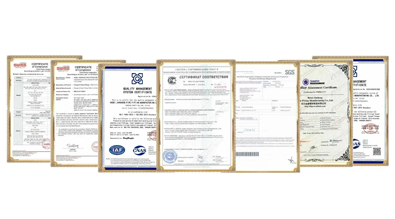
Welcome to RAYOUNG – Strong Pipes, Stronger Promise
